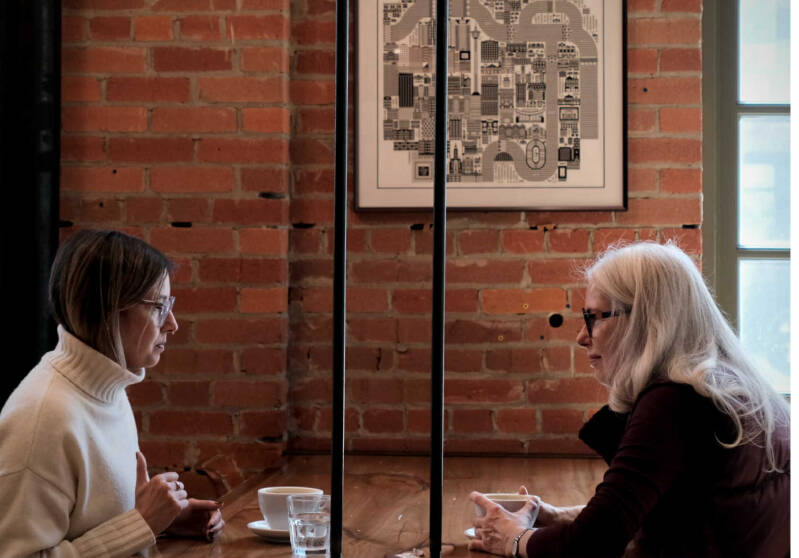Because inclusion isn’t about perfection - it’s about presence, patience, and care.
When we talk about inclusion, we often focus on the student — their needs, their voice, their growth.
But there’s another side we don’t talk about enough: the quiet pressure teachers feel to “get it right.”
The truth is, most teachers want to do the right thing.
They care deeply. They read, they research, they ask questions.
But sometimes, that genuine care turns into anxiety — the kind that sounds like:
“What if I say the wrong thing?”
“What if I don’t support them properly?”
“What if I make it worse?”
That fear can make even the most passionate educators second-guess themselves — and suddenly, inclusion starts to feel like walking on eggshells.
Sometimes, that quiet pressure builds silently — shaping how teachers see themselves, their students, and even what inclusion should look like.
It’s a weight that grows heavier with every lesson plan, every parent meeting, and every moment of uncertainty.

Real inclusion begins with honest conversations

Because inclusion starts with connections not perfection.
The Hidden Weight of “Doing It Perfectly”
Inclusion has never been about confidence.
It’s about willingness — the courage to learn, listen, and try.
Yet, in busy classrooms filled with competing demands, teachers often carry invisible guilt — the guilt of feeling like they’re not doing enough, or not doing it well enough.
Sometimes teachers are spread so thin.
I remember when I was in primary school, in a special education class with one teacher and about eight students.
The students had a wide range of disabilities and learning levels.
Some parents were also very demanding of the teaching staff. They expected that their child’s needs would be fully supported — and rightly so.
But the reality was, the school lacked resources — extremely lacked resources.
Now that I look back, I understand why I was so far behind in my learning when I started high school.
The teachers simply didn’t have enough time to teach me properly.
And because I was one of the more independent students, I didn’t get the support I needed.
It wasn’t right, but it was the reality back then.
So imagine how it is now — when many students with disabilities are in mainstream schools.
Teachers are supporting twenty or more students at once, including those who may need additional time, understanding, or adjustments.
It’s a lot for teachers.
And now, looking back, I can see how unfamiliar many of my high-school teachers were when I first transitioned.
They didn’t know how to support me — not because they didn’t care, but because they hadn’t been given the knowledge or confidence to do so.
Because sometimes inclusion feels harder for the adults than it does for the students - and that’s okay. Growth starts with honesty.
The Other Side of the Story
But I also know that willingness matters.
There are teachers who might not want to put in the effort — and that’s the harder truth we don’t always say out loud.
The year before I went to high school, the staff had a meeting about me.
They had to vote on whether I would be allowed to attend.
Most teachers were in favour.
But there were a few who were against teaching me — simply because I had a disability.
I think about that sometimes.
And I think about a teacher I’ve known for over ten years.
Someone who comes to my home, speaks to everyone in the room — but still hasn’t had a single conversation with me.
I often wonder how that same person goes about teaching in a classroom, supporting students with disabilities, when they can’t even hold a basic conversation with someone who lives with one.
Moments like that reminds me that willingness can’t be taught through training - it has to come from heart.
These moments remind me that inclusion doesn’t begin with policies or programs.
It begins with people — and the willingness to connect.
Real inclusion begins with people - not paperwork

Behind every act of inclusion is a teacher doing the best they can with what they have.
Grace Goes Both Ways
We often remind students to show kindness and patience — but teachers deserve that same grace, too.
Supporting a student with a disability should never feel like a test you have to pass.
It should feel like a shared journey — one built on communication, trust, and the willingness to grow together.
When we give teachers the space to be honest about what they know - and support them through it - inclusion stops being a checklist and starts becoming a culture.
Inclusion isn’t about confidence - it’s about care
You don’t have to be confident to make a difference.
You just have to be willing.
Willing to ask questions.
Willing to listen.
Willing to care - even when it feels messy or uncertain.
Because that’s where inclusion really lives — in the small, imperfect moments where connection is chosen over perfection.
Because supporting a student with a disability should never feel like walking on eggshells - and teachers deserve the same grace and understanding we ask them to show their students

Growth takes time, light and care -for students and
for teachers too.

Wrap up - Stay Connected
If this post resonated with you, share it with a colleague, a parent, or anyone who needs the reminder that inclusion starts with willingness, not perfection.
Follow along on Instagram @challengesbehindacceptance for weekly reflections, real stories, and everyday examples of inclusion that go beyond policy.
And if you’d like to receive heartfelt stories, inclusive resources, and weekly insights like this straight to your inbox, join The Newsletter — created to shine a light on real inclusion. 💛
Every effort matters. Every moment of willingness
shapes real inclusion.
Add comment
Comments